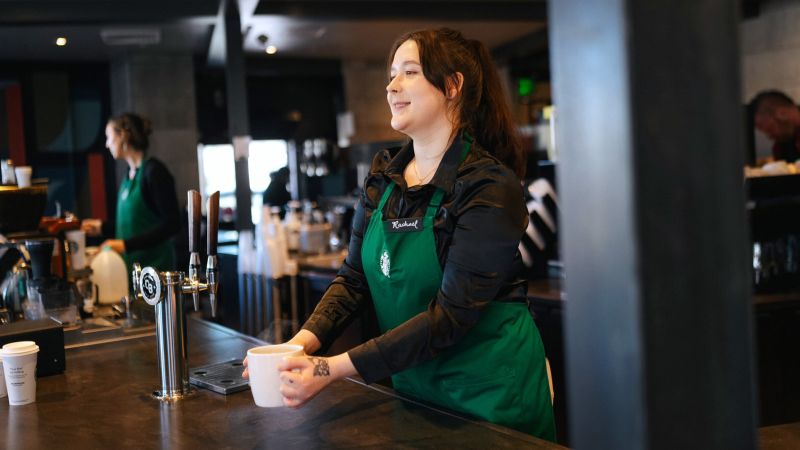Starbucks is undertaking a significant revision of its uniform policy, focusing on the distinct look of its “green aprons” as part of CEO Brian Niccol’s overarching strategy to rejuvenate the beleaguered brand. This move comes at a crucial time when the company is grappling with declining sales, making it essential for Starbucks to present a unified and appealing image to its customers.
Starting from May 12, baristas serving in North American stores will be required to wear solid black tops beneath their signature green aprons. This decision marks a departure from the previous policy that permitted employees to don shirts of any color. According to the company, this change will help their iconic green aprons stand out and create a sense of familiarity and comfort for their patrons. Starbucks aims to create an environment in which customers feel at home as they navigate the coffee chain’s offerings.
In addition to the shirt color alterations, Starbucks is modifying the dress code for pants as well. Employees will soon have to adhere to a stricter pant color guideline, which includes wearing khaki, black, or blue denim. This marks a departure from the earlier allowance of navy, gray, or brown. These clothing modifications reflect the company’s intent to cultivate a more coherent aesthetic that resonates with the Starbucks brand while reinforcing its brand identity.
Starbucks has been actively seeking ways to entice customers back into their stores. The coffee chain has reported a troubling trend of sales slippage across four consecutive quarters, bringing about the longest period of decline the company has experienced in recent years. Factors contributing to this trend include the rising prices of drinks and longer wait times, which have caused some customers to frequent other coffee establishments. Furthermore, the company has faced labor challenges, with several stores voting to unionize in pursuit of improved wages, benefits, and working conditions for employees.
The revised dress code is an effort to foster a more consistent coffeehouse experience. Starbucks believes that these changes will empower workers to focus on what’s paramount—crafting high-quality beverages and enhancing customer relations. By implementing clearer dress code guidelines, Starbucks aspires to create an environment that is not only recognizable but also inviting to their patrons.
These changes form part of a broader array of initiatives introduced by Niccol since he assumed leadership of Starbucks in September 2022. Earlier this year, the company streamlined its menu significantly—cutting approximately 30% of items, a move designed to reduce wait times for customers. This has also involved some painful decisions such as the elimination of 1,000 corporate positions as part of the restructure.
In an effort to reconfigure the ambiance of Starbucks stores, Niccol has implemented policies that limit restroom access to paying customers only. He has also rebranded the company to “Starbucks Coffee Company,” which underscores its heritage rooted in coffee. The CEO’s vision aims to refocus the brand’s fundamentals while providing an experience that reflects a modern take on its historical roots.
Moreover, Niccol has revived some light-hearted elements of Starbucks culture, such as encouraging baristas to doodle on cups and reinstating self-service milk and sugar stations. These initiatives aim not only to enhance customer interactions but also to foster a sense of community within the stores.
Acknowledging the challenges ahead, Niccol expressed in the latest earnings call that there is “still room for improvement.” However, he remains optimistic that Starbucks is “on the right track.” Since the implementation of his changes, there has been a positive response from customers, suggesting that the shifts are resonating well.
The effectiveness of these uniform and operational changes will be scrutinized in the upcoming earnings report, giving stakeholders a clear indication of whether Starbucks’ strategies are taking root and can help in reclaiming its position in the competitive coffee market.



